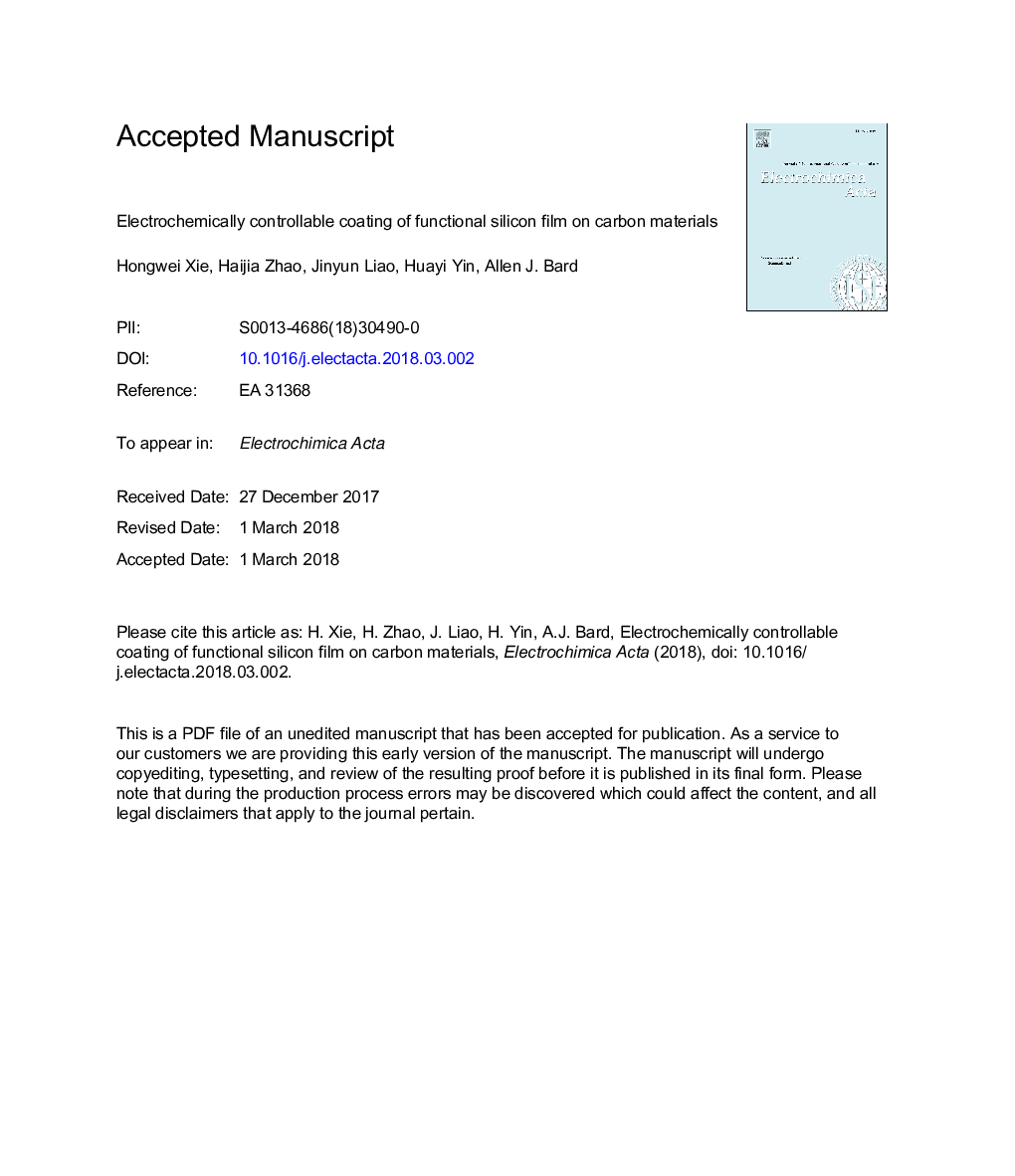| Article ID | Journal | Published Year | Pages | File Type |
|---|---|---|---|---|
| 6603687 | Electrochimica Acta | 2018 | 22 Pages |
Abstract
A silicon deposit of various forms was successfully coated on graphite by electrodeposition in molten CaCl2 containing nano-SiO2 as a silicon precursor. The morphologies of the deposited silicon can be tuned from Si nanowires to a dense film by controlling constant electrolysis cell voltage. In addition to controlling electrochemical polarizations, the substrate plays a key role in forming a dense silicon film. By analyzing the interface between the Si film and graphite substrate, a thin transition layer comprising of Si, SiC and C enables the good adhesion of the Si film with the carbon substrate and thereby helps the growth of a dense Si film. Besides the application for photovoltaics, the electrolytic p-type Si film was employed as a binder-free anode for lithium-ion batteries delivering a capacity of over 2500â¯mAhâ¯gâ1 in the first 10 cycles and retaining 800â¯mAhâ¯gâ1 after 40 cycles. Moreover, this method was applied for coating Si on carbon fibers, which could be a general way to prepare Si with controllable forms and silicon/carbon core-shell structures for functional materials.
Related Topics
Physical Sciences and Engineering
Chemical Engineering
Chemical Engineering (General)
Authors
Hongwei Xie, Haijia Zhao, Jinyun Liao, Huayi Yin, Allen J. Bard,
